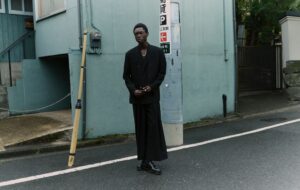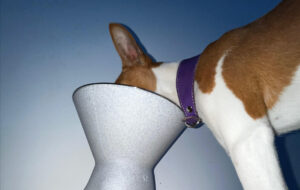|
|
||
|
It’s divided into heaven and hell,” James Dilley, associate director at Jestico and Whiles, explains as we stand opposite the new Playboy Club in Mayfair. The lower floor is dark and mysterious, shielded with a mashrabiya screen whose perforations, when you get up close, turn out to be little Playboy bunnies. The louche upper floor, heaven, is light, swathed in net curtain that can be lit a variety of colours. The teasing silhouette of a bunny girl appears at intervals in a lightbox and above the glass entrance a digital slow-motion kiss blesses punters as they cross the threshold. The branding on the building, a podium to a large residential tower, is supposed to be “restrained and reserved”, a members-only club that requires minimal branding. “The minute you come through the door you’re in fantasy land,” Dilley enthuses. “You go through the looking glass. Down the rabbit hole.” In 1960, in the Architects’ Journal, Reyner Banham claimed that he read Playboy for the architecture and design. “Playboy has over the years discussed and illustrated quite a lot of furniture,” he wrote. The magazine, with its photographs and fantasy blueprints of hip, hedonistic bachelor “dens of seduction”, reclaimed the domestic sphere for the urban male. In December 1953, in his first editorial, Hugh Hefner made this clear: “We like our apartment … We enjoy mixing up cocktails and an hors d’oeuvre or two, putting a little mood music on the phonograph and inviting in a female acquaintance for quiet discussion on Picasso, Nietzsche, jazz, sex.” Barbara Ehrenreich went so far as to claim that the pin-ups gave a heterosexual gloss to this style-conscious interest in the domestic interior: “The breasts and bottoms were necessary not just to sell the magazine but to protect it.” In 1959, after his first divorce came through, Hefner advertised himself as the embodiment of the libertarian Playboy lifestyle. He hosted a TV show, Playboy’s Penthouse, staged to feel like a soirée at his bachelor pad. The set had a woodburning fire, an aquarium, a revolving bookcase that transformed into a bar, and exhibited his preference for “Mies and Wright kind of architecture and Knoll-Herman Miller style of furnishing”. He also opened the first Playboy Club in Chicago, a fashionable members-only establishment that was staffed by playgirls in bunny costumes and bow ties and was supposed to feel like a ritzy, bachelor’s lair. It was decorated in leather, chrome and teak and was full of high-tech gadgetry. The first London club launched in 1966, with Roman Polanski and Woody Allen at the opening. It closed in 1981. The clubs (and magazine) never really survived the backlash of political correctness in the 1980s, an era Hefner calls “the Great Repression”. Jestico and Whiles’ relaunch hopes to cash in on Mad Men nostalgia. The staircase features large photographs of the clubs’ heyday, and the casino floor (nothing is more depressing than the sight of croupiers in rabbit ears taking bets in mid-afternoon) is book-ended by collages of the bunny icon made from miniature covers of the magazine. The ceilings of the dining areas are also wallpapered in old issues. Despite a luxurious honeycomb bar for mixologist Salvatore Calabrese, decorated in gold, copper and amber, this version of Paradise Lost ultimately remains unappealing. In the Hell part of the scheme, a dance floor, surrounded by booths with red light boxes underneath, hot pink curtains, and carpets woven with bunny girls sliding down the knots, certainly makes you feel like you’re in the ninth circle.
|
Image James Newton
Words Christopher Turner |
|
|
||
















